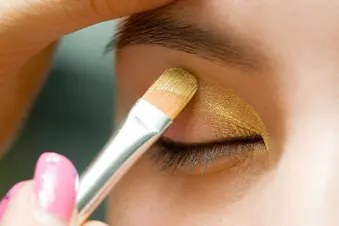Cosmetics Quiz: The Truth About Your Makeup


Question 1/13
It's OK to sleep in your eye makeup.
- True
- False
Question 2/13
Which of the following may attract the sun's UV rays to your lips?
- Lip balm
- Lip liner
- High-gloss sheer lipstick
- Opaque cream lipstick
Question 3/13
Nail polish may stain your nails.
- True
- False
Question 4/13
Hypoallergenic cosmetic products don’t cause allergic reactions.
- True
- False
Question 5/13
According to some experts, which product should you replace every three months?
- Powder eye shadow
- Mascara
- Lipstick
- Powder
Question 6/13
Which of the following promotes bacterial growth in makeup?
- Sharing makeup with friends
- Exposing makeup to light or heat
- Using makeup when you have an eye infection
- All of the above
Question 7/13
Some lipsticks made in the U.S. contain lead.
- True
- False
Question 8/13
Some eye makeup made in other countries contains hazardous levels of lead.
- True
- False
Question 9/13
The FDA approves all cosmetics before they are sold to the public.
- True
- False
Question 10/13
A cosmetics maker is required to report injuries caused by its products.
- True
- False
Question 11/13
Which of the following is the most common injury from cosmetics?
- Allergic reactions to foundation
- Damaged fingernails with acrylic tips
- Scratching the eye with a mascara wand
Question 12/13
A manufacturer that claims a cosmetic has medicinal benefits may be breaking the law.
- True
- False
Question 13/13
There is no hard evidence linking the use of cosmetics with cancer.
- True
- False
